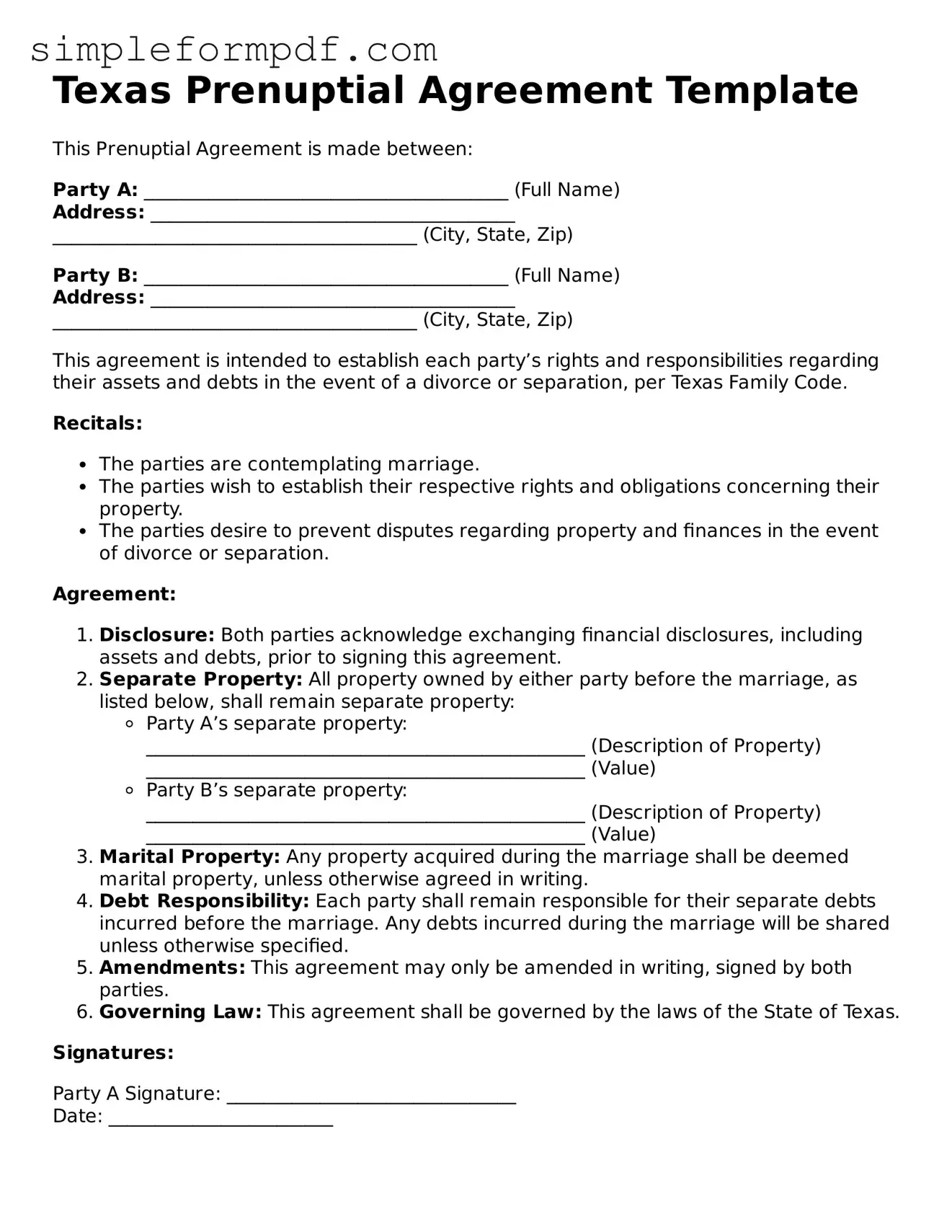Texas Prenuptial Agreement Template
This Prenuptial Agreement is made between:
Party A: _______________________________________ (Full Name)
Address: _______________________________________
_______________________________________ (City, State, Zip)
Party B: _______________________________________ (Full Name)
Address: _______________________________________
_______________________________________ (City, State, Zip)
This agreement is intended to establish each party’s rights and responsibilities regarding their assets and debts in the event of a divorce or separation, per Texas Family Code.
Recitals:
- The parties are contemplating marriage.
- The parties wish to establish their respective rights and obligations concerning their property.
- The parties desire to prevent disputes regarding property and finances in the event of divorce or separation.
Agreement:
- Disclosure: Both parties acknowledge exchanging financial disclosures, including assets and debts, prior to signing this agreement.
- Separate Property: All property owned by either party before the marriage, as listed below, shall remain separate property:
- Party A’s separate property:
_______________________________________________ (Description of Property)
_______________________________________________ (Value)
- Party B’s separate property:
_______________________________________________ (Description of Property)
_______________________________________________ (Value)
- Marital Property: Any property acquired during the marriage shall be deemed marital property, unless otherwise agreed in writing.
- Debt Responsibility: Each party shall remain responsible for their separate debts incurred before the marriage. Any debts incurred during the marriage will be shared unless otherwise specified.
- Amendments: This agreement may only be amended in writing, signed by both parties.
- Governing Law: This agreement shall be governed by the laws of the State of Texas.
Signatures:
Party A Signature: _______________________________
Date: ________________________
Party B Signature: _______________________________
Date: ________________________
This document is executed in duplicate, with each party retaining one copy.
